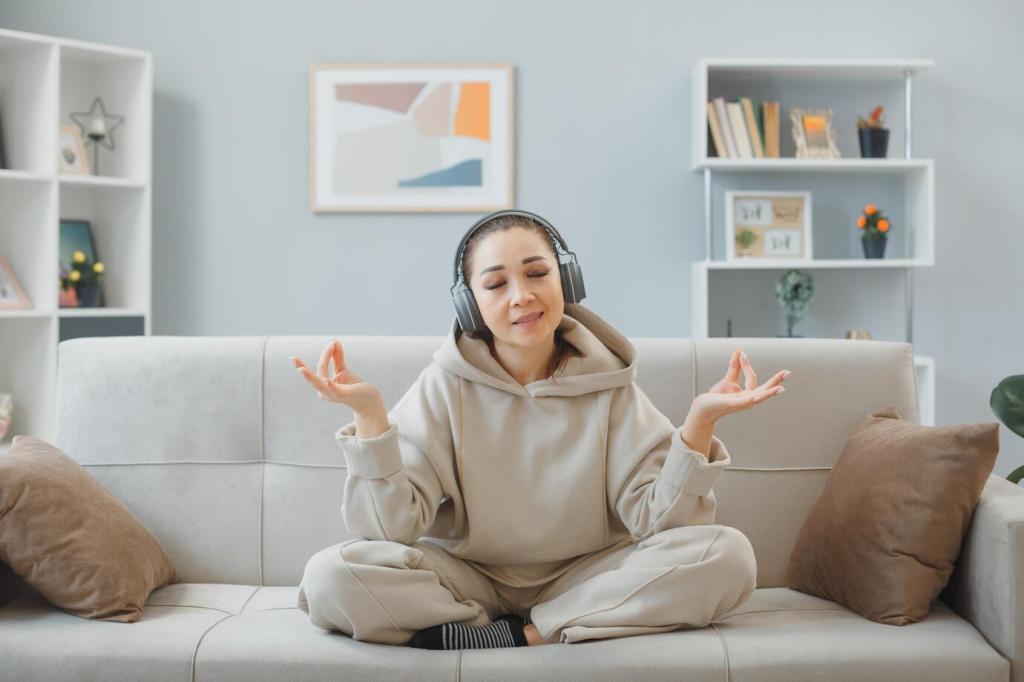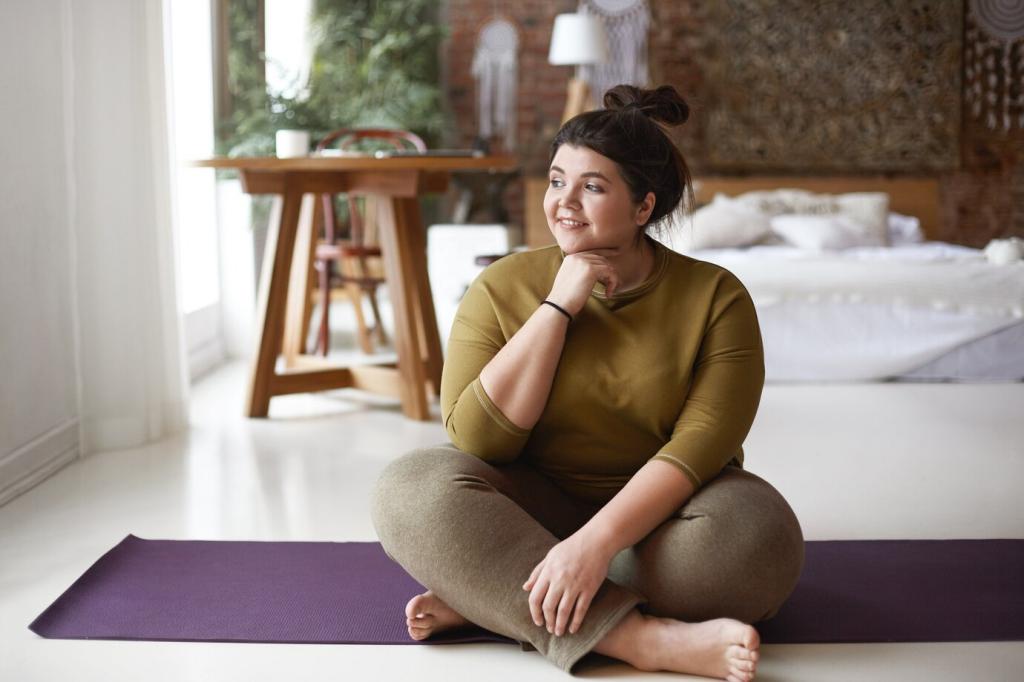
Find Your Calm: Stress-Relief Meditation Strategies
Chosen theme: Stress-Relief Meditation Strategies. Today we explore simple, science-informed practices that quiet the mind and relax the body, even when life is loud. Breathe with us, share your experiences, and subscribe for gentle reminders that keep calm close.
Breathwork Basics for Fast Relief
Place one hand on your belly and one on your chest. Inhale slowly through the nose, belly rising; exhale as the belly softens. Try six cycles. Notice shoulders dropping, jaw easing, thoughts decelerating. Share your sensations in the comments to inspire others.


Breathwork Basics for Fast Relief
Inhale for four, hold four, exhale four, hold four. Imagine tracing a box’s four sides with your breath. Repeat three times, counting gently. This pattern steadies attention during presentations or conflict. Tell us where you used it and what changed for you.
Designing a Daily Micro-Meditation Routine
Attach a one-minute breath practice to something you already do, like waiting for coffee or brushing teeth. When the cue happens, the micro-meditation follows. This pairing reduces friction and builds momentum. Comment with your chosen cue to help others brainstorm theirs.

Guided Imagery and Visualization
Build Your Inner Safe Place
Close your eyes and picture a place where you feel steady—perhaps a forest path or a sunlit kitchen. Engage senses: the scent, temperature, colors, and distant sounds. Visit for three breaths whenever tension rises. Share a detail of your scene to spark others’ ideas.
Rehearse Stressful Scenarios Calmly
Imagine tomorrow’s challenge unfolding with poise. See yourself pause, breathe, and respond thoughtfully. Visualization primes neural pathways for calmer action. Write a short script, then practice it nightly. Comment with a line from your script to anchor your commitment.
A Listener’s Story: Pre-Interview Nerves
One listener visualized entering the lobby, greeting the receptionist, and breathing before each question. On interview day, their body recognized the sequence and settled. If visualization helps you, subscribe for a weekly prompt and share your favorite calming image.
Body Scan and Somatic Awareness

Starting at the toes, gently tense for a breath, then release and notice warmth. Move upward—calves, thighs, belly, hands, jaw, forehead. The contrast educates your body about softening. Tell us which region surprised you by holding the most tension today.
Mindfulness at Work and Study
Before opening email, take three slow breaths and set a simple intention: prioritize kindly, respond clearly. This pause reduces reactivity and hurried mistakes. Try it for one week and report your most helpful intention so we can build a shared collection.
Mindfulness at Work and Study
Open meetings with sixty seconds of quiet breathing. It respects everyone’s nervous system and sets a collaborative tone. Suggest it gently: “Let’s arrive together.” If you try it, comment on the team’s reaction and whether conversation felt clearer or calmer.

Coping with Nighttime Stress and Insomnia
The 4-7-8 Wind-Down
Inhale quietly for a count of four, hold for seven, exhale audibly for eight. Repeat four cycles. The extended exhale encourages relaxation. If thoughts intrude, label them kindly: “thinking.” Share how many cycles felt right and what bedtime you’re aiming to protect.


Screen-Light Hygiene with Mindful Transitions
Shut down bright screens an hour before bed. Replace with a dim lamp, warm tea, and five minutes of gentle breathing. Let evening become a ritual, not a blur. Tell us your favorite wind-down cue so others can craft a personal, calming sequence too.



Tracking Progress and Staying Motivated
Each Sunday, answer: When did I feel most tense? Which practice helped fastest? What do I want to try next? Short reflections clarify direction. Post one insight below so we can learn together and celebrate your practical progress.
Tracking Progress and Staying Motivated
Rate your daily stress from one to ten, then note which strategy you tried. Over time, patterns emerge. Keep it quick so tracking stays sustainable. Share one pattern you noticed—perhaps evening practices helping more than morning—to encourage thoughtful experimentation.
